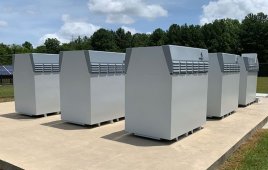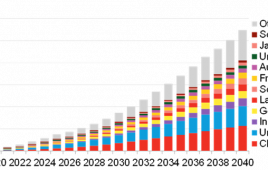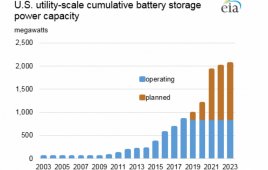By Michelle Froese, Senior editor
Windpower Engineering & Development
For the renewable-energy industry, energy storage has typically served as a means to an end: maximize the energy used by the transmission grid to boost a project’s production value and bottom line. A good storage system can help do that by regulating the use of variable resources, such as wind or solar power, ensuring such projects meet grid interconnection requirements. For a wind-farm owner, this means storage can fully capitalize on the wind power generated at a farm, and supply it to the grid as needed to provide a better return on investment. It’s a win-win for the facility owner and a utility.
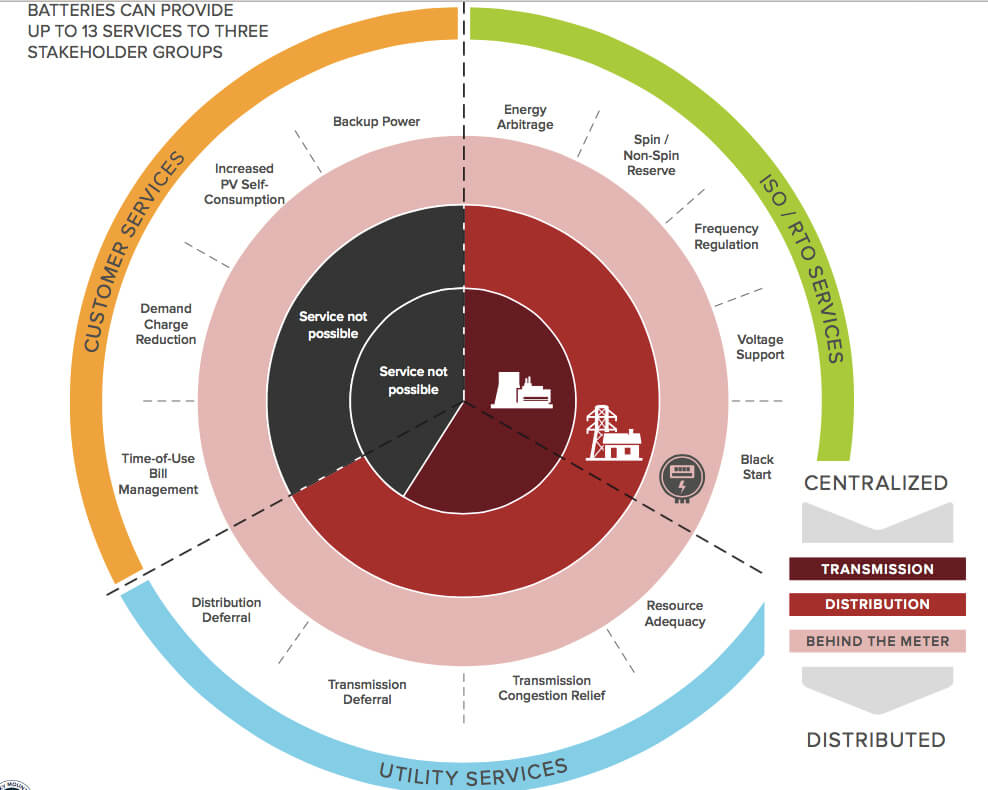
Rocky Mountain Institute performed a study that determined energy storage is capable of providing a suite of 13 general services to the electricity system. Currently, most energy storage systems are deployed for one of three single applications: demand charge reduction, backup power, or increasing solar self-consumption. This results in batteries sitting unused or under-used for well over half of a system’s lifetime. For example, an energy storage system dispatched solely for demand charge reduction is used for only 5 to 50% of its useful life.
However, energy regulation is only one small service provided by a storage system. In fact, in a Rocky Mountain Institute study on the economics of energy storage, researchers compile 13 fundamental services. According to the study, most systems are deployed for one of three single applications: demand charge reduction, backup power, or increasing self-consumption of renewables.
“As this study points out, storage can do so many different things,” says Ted Ko, Director of Policy at Stem, Inc., a company that develops, finances, and maintains energy storage systems backed by its proprietary software and predictive analytics to optimize the value of customer’s power assets and facilitate their participation in energy markets. Stem’s mission is to build and operate the largest digitally connected energy storage network for its customers.
“But it’s not just about grid regulation or generation. A storage system can help absorb and store solar or wind power, it can help with voltage on the grid, it can help with frequency regulation or transmission congestion, and more. The idea that storage can do these multiple different things with the same asset is quite interesting, but it’s an often under-used resource.”
Given a reliable battery or storage device, Ko says the next key to maximizing an energy-storage system is software. “Storage is really about the software in terms of how, when, and where it’s applied — in other words, it has to ‘know’ when to use and absorb power, and then when to discharge, or charge and discharge it. Take demand charges, for example. The only way it works is with software that can correctly anticipate when a certain customer’s demand is going to peak.”
Demand charges are based on the peak electricity usage of a customer during a set billing period. These charges cover a utility’s fixed costs of providing a certain level of energy to their customers. The challenge is that utilities have to maintain enough capacity — which, Ko points out, requires them to keep a vast array of expensive equipment on constant standby, including transformers, wires, substations, and generating stations — to satisfy all their customers’ energy needs at once (say, to cover a hot day in August when every customer runs their AC).
“So let’s say you’re a commercial or industrial customer, and you have your monthly energy bill, which has two components to it. One component is the kilowatt-hours consumed every month and the second are the demand charges. Demand charges are based on your peak usage kilowatt — not kilowatt-hour, but your peak usage during the month. The initial reason we started the company was based on helping customers with those demand charges,” he shares.
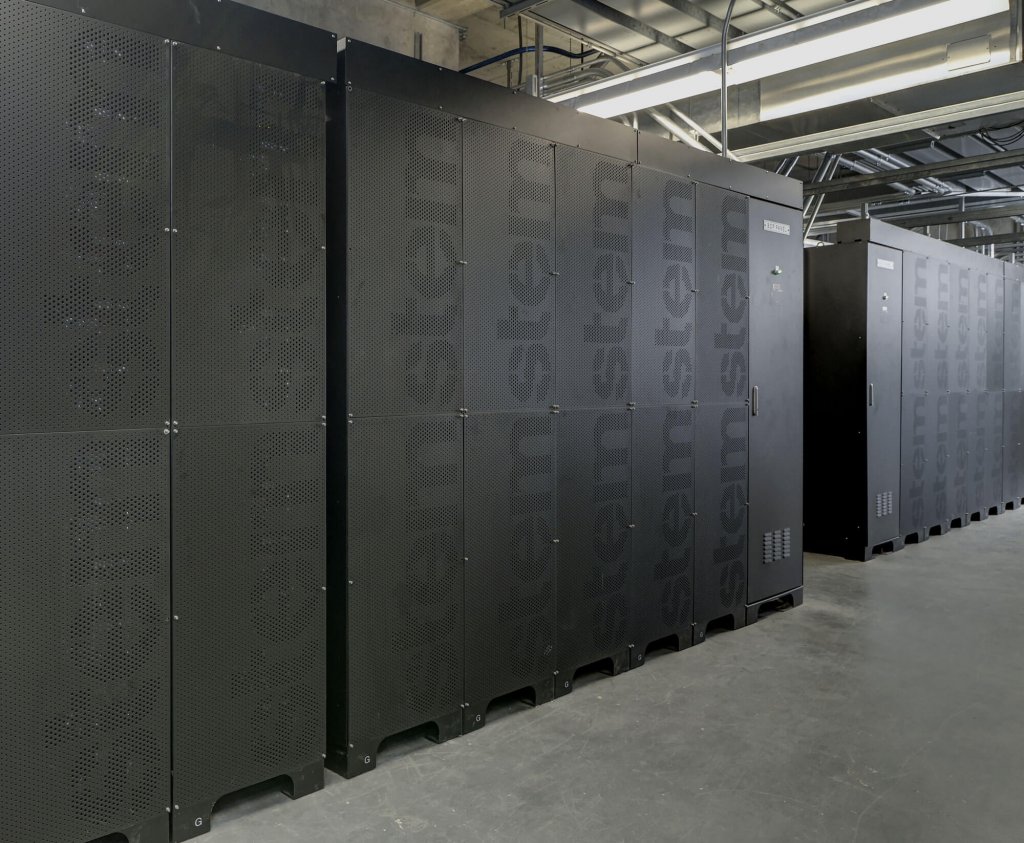
Stem’s UL-certified PowerStore is a fast-converting energy storage system. PowerStore draws energy when costs are low and automatically deploys when costs are high — saving users the most on electric bills. By dispatching batteries for a primary application and then re-dispatching them to provide multiple, stacked services creates additional value for all electricity system stakeholders.
In the U.S., demand charges are increasing, even while energy prices are going down. There are several reasons for this including an aging grid that requires more maintenance and updated infrastructure — costs that are passed onto ratepayers. Other factors that may affect utility rates include the growth of wind and solar energy. Yes, even renewables can be to blame mainly because they cause greater sensitivity to peak loads because of their inherent variability.
For some customers, demand charges are 30 to 70% of their energy bill. “Instead of taking energy from the grid during those peak times, an energy storage service takes the power from the battery, so to the grid it looks like peak usage went down. This is known as peak shaving, and it reduces demand charges.”
According to Ko, peak shaving can be much more lucrative than trying to do what’s called energy arbitrage, which is charging the battery when it is low and discharging when prices are high.
“This is where software comes in and to do a good job, it must determine the load, figure out where the peaks are going to be, then proactively shave off those peaks. Essentially, it’s predictive analytics,” he says. “So, we look at your history of what a building has done over the last year, predict what it’s going to do in the next 24 hours, and even over next couple of days or further out. Then, it must work to shave off those peaks appropriately to save the most money based on whatever particular rates a customer is at the time.”
Virtual power plants
Demand charges are only one example of an important software feature for a storage system. As the Rocky Mountain study found, there are multiple facets of a good system.
“On a larger scale, software must have the capacity to understand a site’s optimal behavior. It must ask and answer numerous questions at once: Could I be helping my customer with his demand charges, or could I be doing some voltage support for the grid at this particular moment, or do I have time to charge my battery now? The software has to understand all that on a site-by-site basis and each and every day.”
Ko continues: “Remember storage can provide more than one service, so it can also help with the grid and potential energy needs or congestion. And this is where Stem has grown from using individual battery systems, which certainly can provide some services to the grid by itself. But now just imagine those 18, 36, or even 1000-kW systems as a fleet.”
Stem was one of the first companies to get involved with the California Independent System Operator (CAISO) for a pilot program in 2015 that used a fleet of storage systems with predictive software for real-time use in the marketplace. The project came under Pacific Gas and Electric’s Supply-Side Pilot, which enabled customer-sited, demand-side resources to participate in the CAISO wholesale markets as a form of demand response.
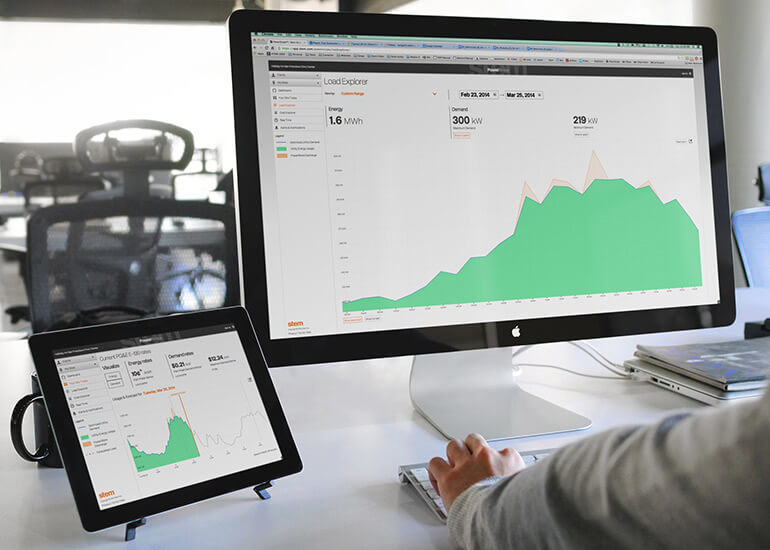
Stem has pioneered a subscription-based, “storage-as-a-service model” to enable commercial, industrial, and institutional customers to reduce energy bills and boost sustainability with no upfront costs.
“We deployed a fleet of these systems and used the data to bid into the CAISO market, much like a generator or a power plant would,” explains Ko. It marked the first time that an energy storage provider has participated in real-time energy markets, benefitting the electricity grid while earning revenue in California.
Stem collected extensive data during day-ahead bidding at six customer sites for more than a year to enhance forecasting and refine automation, although its California networks have now grown to over 500 sites operating or under contract. Accurately forecasting customer energy use is critical to ensure systems can be used for decreasing energy costs at the customer and participating in energy markets.
“This is one of the best uses for energy storage, in my opinion,” he shares. “With the right software, it is possible to create variable location-specific, ‘dispatchable’ networked-enabled virtual power plants. This means a storage system can respond in very precise small locational algorithms to do whatever that neighborhood congestion needs but using it as an entire fleet.”
Where ‘demand response’ signals a utility to provide extra power, a virtual power plant is a ‘grid response’ that acts like a fast-responding generator. So far, Stem has shown it is possible to capture data on a one-second or less basis. “We did a case study for the Energy Storage Association showing that we’ve got less than five-minute response times down to one minute response times.”
To turn the discussion back to renewables, energy storage is typically considered a solution to a lack of generation. So it can store power for those times when the sun isn’t shining or wind isn’t blowing. But under-generation is only one side of the only problem.
“Take California, for example. A lack of renewable-energy generation is not an issue as much as a loss of energy is at certain times because of over-generation. The grid can’t keep up,” says Ko. “This is a concern with both solar and wind power. There are times when winds are being curtailed simply because there’s too much of it.”
He says that if California were to create the market for a virtual power plant, Stem could easily step in and use its energy storage systems to store that over-generation. “If the state allowed us to bid in, we could suck up that extra wind and solar power, rather than waste it. But the market doesn’t exist yet. Nevertheless, the possibility is there, thanks to the benefits and many facets of energy storage,” he says.
Filed Under: Energy storage, News, Policy


